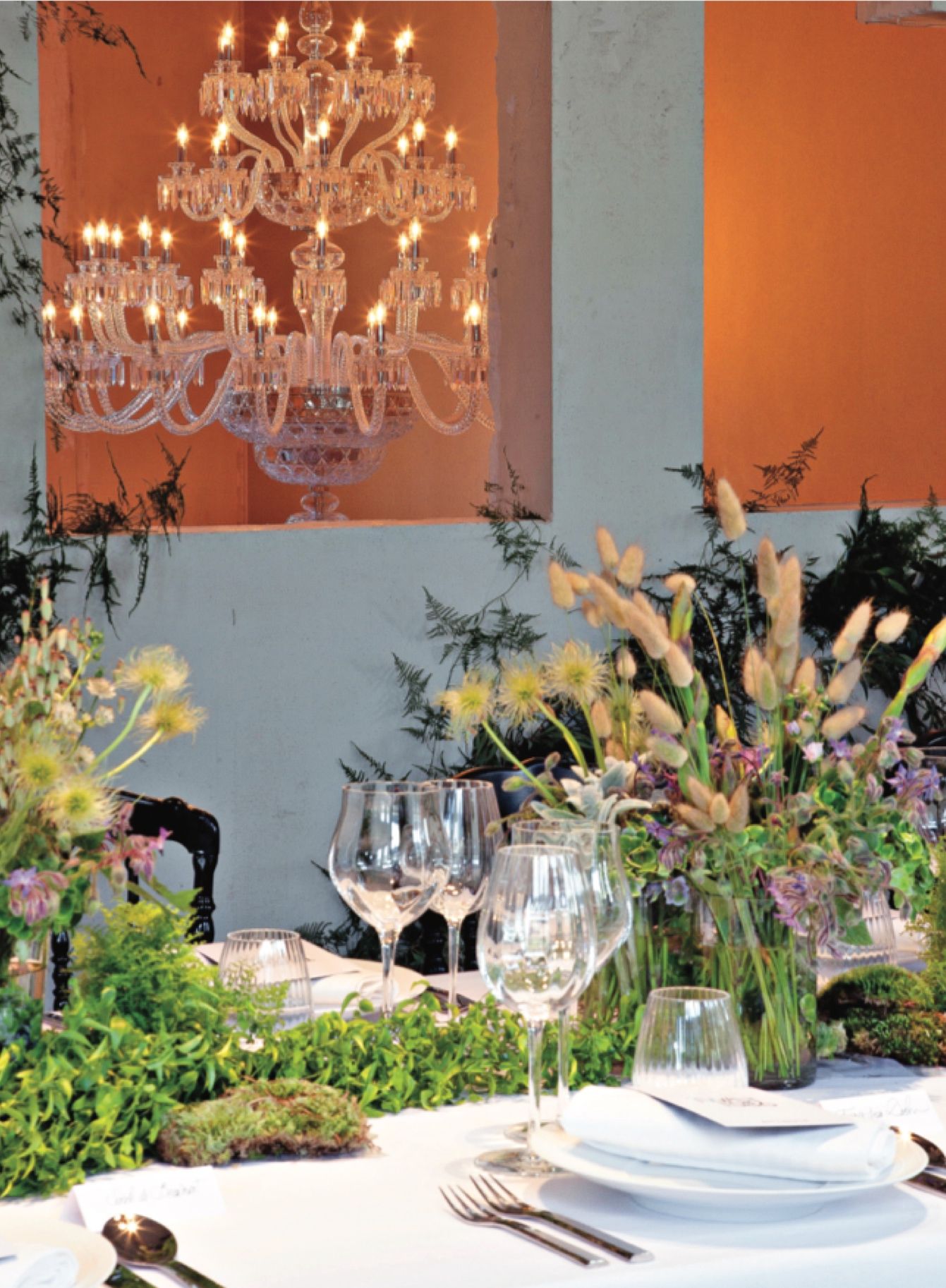(the new glasses from Cristalleries de Saint-Louis are called Twist 1586: the number corresponds to the brand’s year of foundation - a centuries-old tradition focussed on absolute quality.)
text and illustrations by Massimiliano Mocchia di Coggiola
In an old apartment in Paris overlooking Opéra Garnier, we tested Twist 1586, the new range of glasses from Saint-Louis, the oldest glassware manufacturer in Europe.
Parisians certainly have their flaws, but it must be acknowledged that they know how to receive guests: no sooner had I crossed the threshold of the Cristalleries de Saint-Louis boutique in Rue Royale, a stone’s throw from Place de la Concorde and near the famous Maxim’s restaurant, than a beautiful, young, slender French girl- probably a model - ran smiling towards me, in her hand a flûte full of fine Champagne. The glass, which was also gorgeous, was remarkably heavy, on account of its 24% of lead oxide which, added to the silica, differentiates glass from crystal. That is actually how one of the materials most prized and appreciated by kings and aesthetes was created in 1676: an English invention which the Cristallerie Reali de Saint-Louis (the official title granted to them by Louis XV) adopted and perfected in 1781. Saint-Louis-lès-Bitche, in Lorena, is not a particularly appetizing tourist destination, but it is on that contested terrain that the famous royal crystal-maker (previously a glassworks) had operated since the late 1500s. The royal patent gave the company of craftsmen something of an edge, and the merger with Baccarat in 1831 (which terminated in 1857) was another launchpad that could - without breaking them - project the precious crystals blown in Saint-Louis towards international fame.
The shop I am received in has a display of many of the old creations that made the Maison’s name: vases and glasses in coloured crystal (especially ruby-red, the symbol of the brand), glasses that imitate malachite and opaline, large vases with meticulous etching, on several very thin layers of crystal in various colours, a technique as old as it is difficult to implement. What catches the eye most of all are the glasses, authentic works of art, of which Saint-Louis is rightly proud: the crystal-manufacturers were actually the first to introduce the concept of tableware, the first set of which was called the Trianon model.

And I have come here precisely to talk about glasses: to the boutique that houses ancient and refined creations (many of which are still reproduced in the factory) and chandeliers, vases and other modern creations, made in collaboration with some contemporary designers. I am captivated by the table lamp shaped like an industrial mould, created in crystal, that can open up to vary the light source, and the comical spherical paperweights invented in 1845 in this very factory, which are slavishly copied all over the world today. After my tour of the boutique, we strolled to the venue for the evening’s proceedings, an address that had been kept secret to surprise the guests with the novelty of an original setting. And it was a pleasant surprise: an old, time-worn apartment with balconies facing Opéra Garnier. The place is being refurbished (which certainly adds to its decadent charm), but the space is impressive: you have a distinct sensation of reliving the bourgeois glories of the Belle Époque. A video shows an artist at work in the Saint-Louis factory. The procedure is similar to the one employed by glassmakers in Murano: a long hollow metal rod, a reddish malleable substance and the savoir-faire of a young master glass-blower who, in a few short minutes using tools created especially for the job, cuts, assembles, blows, rolls, places in a mould, cools, and fires. And the glass is made. The procedure is complicated to describe, but the results are always breathtaking.

I continue my tour in the two halls, where gazetteers from all over the world are drinking Champagne and chatting amiably. The dining room is decorated with plants and creepers, many of which are in vases (at the exit, I notice several sticking out of ladies’ handbags), and the table settings are pure Parisian elegance. And then we came to the glasses, named Twist 1586 in reference to the official date of the company’s founding. Produced in three variants (à vin de fruit, à vin de garde, à Champagne) they are delicately worked in the goblet in the Venetian style: the principle is to decorate without altering the possibility of appreciating the wine contained in them. Michel Bettane, Gérard Margeon (head sommelier for Alain Ducasse), Louis-Fabrice Latour and Jean-Francis Pécresse were kind enough to advise the Cristallerie de Saint-Louis in the production of these glasses. Among the declinaison autour de l’asperge verte, the medaillon de veau confit, and the fruits rouges in their mint gazpacho, I repeatedly test the prestige and beauty of Twist 1586s, usually to ascertain their effective validity and their perfect sensorial yield, filling them with fine wines such as Pouilly-Vinzelles, Aloxe-Corton 1er and, not one hundred percent convinced, again with Bollinger rosé. Boarding the taxi the Maison provided me with, and waking in my hotel after 11 hours of uninterrupted sleep, I have no hesitation in confirming that the new glasses from Cristalleries de Saint-Louis carry out their function perfectly.









